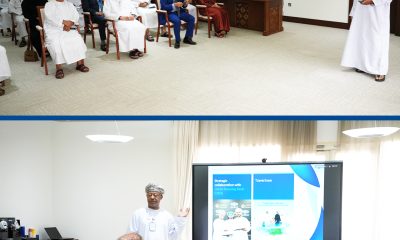Featured
7 Innovations that Reached Critical Mass in 2019

The year about to end saw the start of many new technological innovations that are expected to become better and more aligned to the needs of business and society at large.
1. Predictive Banking

Image courtesy: Pixabay
Using big data and machine learning, banks are set to create real-time “predictive” profiles of customers. This will help them offer services that the customer may actually need in the future, instead of pushing products that they resist.
2. Renewable Energy Storage

The hindrance to the widespread adoption of solar and wind energy are their intermittent nature of supply. This drawback has been solved with the speedy development of energy storage tech such through lithium ion and flow batteries and molten salt thermal storage.
3. Robot Dexterity

Recently, a limb holding a Rubik’s Cube managed to solve the famous puzzle in a few minutes. The AI-enabled hand used visual sensors and a cube-solving algorithm and proving how dexterous machines have become, and can be potentially put to use for complex tasks such as drawing and painting and building things.
Read: Power utilities bet on robotics to enhance operations
4. Floating Nuclear Reactor

The world’s first floating nuclear power block “Akademik Lomonosov” at the quay wall of the Baltic shipyard
This year, Russia released into the sea the world’s first floating power-generator running on nuclear fuel. The ship, named Akademic Lomonosov, has two 35 MW reactors and can generate power of up to 1 GW, providing relatively safe and low-carbon energy to far-off areas.
5. Super-fast Helicopter

Marines helicopter Bell UH-1Y Venom Super Huey during the Miramar Air Show, Marine Corps Air Station MCAS, CA.
SB-1 Defiant is a coaxial double rotor chopper, developed for the US military by Boeing and Sikorsky, can fly at twice the speed and range of usual helicopters. It is also more agile and can be maneuvered easily.
Read: How a Math Whiz Built a $700 Million Fortune Without Humans
6. DNA data storage

DNA shaped data server units on dark background. 3D illustration
With massive amounts of digital data being every second, the need for newer ways to store data storage is growing. Enter the DNA storage, which converts binary data of 0 and 1 into the quaternary encoding nucleotides A, C, G, and T, synthesizes the sequence, and stores the data. With this, one achieves information density of petabytes of data per gram, and the durability as storage lasts for centuries without energy input, unlike today’s power-guzzling servers. But the challenge will be to reduce the cost of the process in the coming years. Microsoft is already said to be working towards this tech.
Read: Chinese parents test DNA to check if kids will become prodigies
7. Lab-grown meat

Artificial lab grown meat in petri dish in laboratory concept
This is the year lab-grown meat reached a critical point, being able to drastically cut the cost of making cultured meat that does not involve slaughtering animals. Instead, startups in this business take stem cells from a livestock’s muscle tissue and multiply them to make juicy steaks to burgers.
Read: First, Burger King. Now Fancy Tasting Menus Are Ditching Meat
-

 Magazines2 months ago
Magazines2 months agoOER – September 2025 Issue
-

 Alamaliktistaad Magazines1 month ago
Alamaliktistaad Magazines1 month agoAlam Al Iktisaad – September 2025 Edition
-

 News1 month ago
News1 month agoKitchenomiKs Secures Investment of US$3.2M Led by Jasoor Ventures
-

 News2 months ago
News2 months agoCent Capital, AI Finance App by ex-AWS Strategist ‘The Beast of Bay Area,’ Launches to End Financial Anxiety, Hits $1M AUM
-

 News2 months ago
News2 months agoOman Inaugurates ‘Hadatha’ – Its All-New Cybersecurity Center
-

 Banking & Finance1 month ago
Banking & Finance1 month agoOman Arab Bank Highlights Its Ongoing Strategic Initiatives and Future Plans
-

 News1 month ago
News1 month agoIEA Expects Global Oil Market to Remain Oversupplied in 2026
-

 Energy1 month ago
Energy1 month agoWLGA Middle East LPG Summit & Expo 2025 to be held at OCEC on November 10 and 11






























